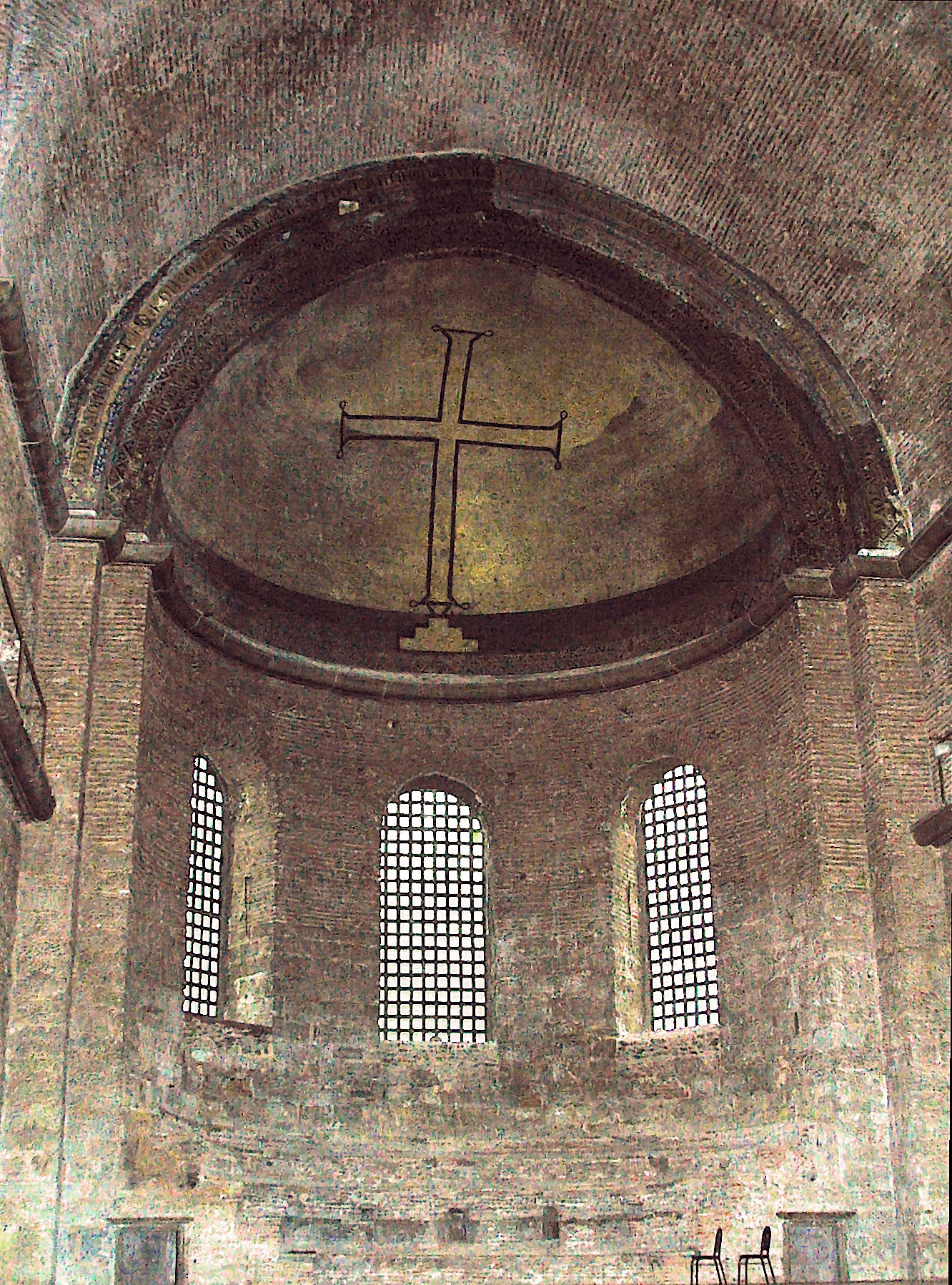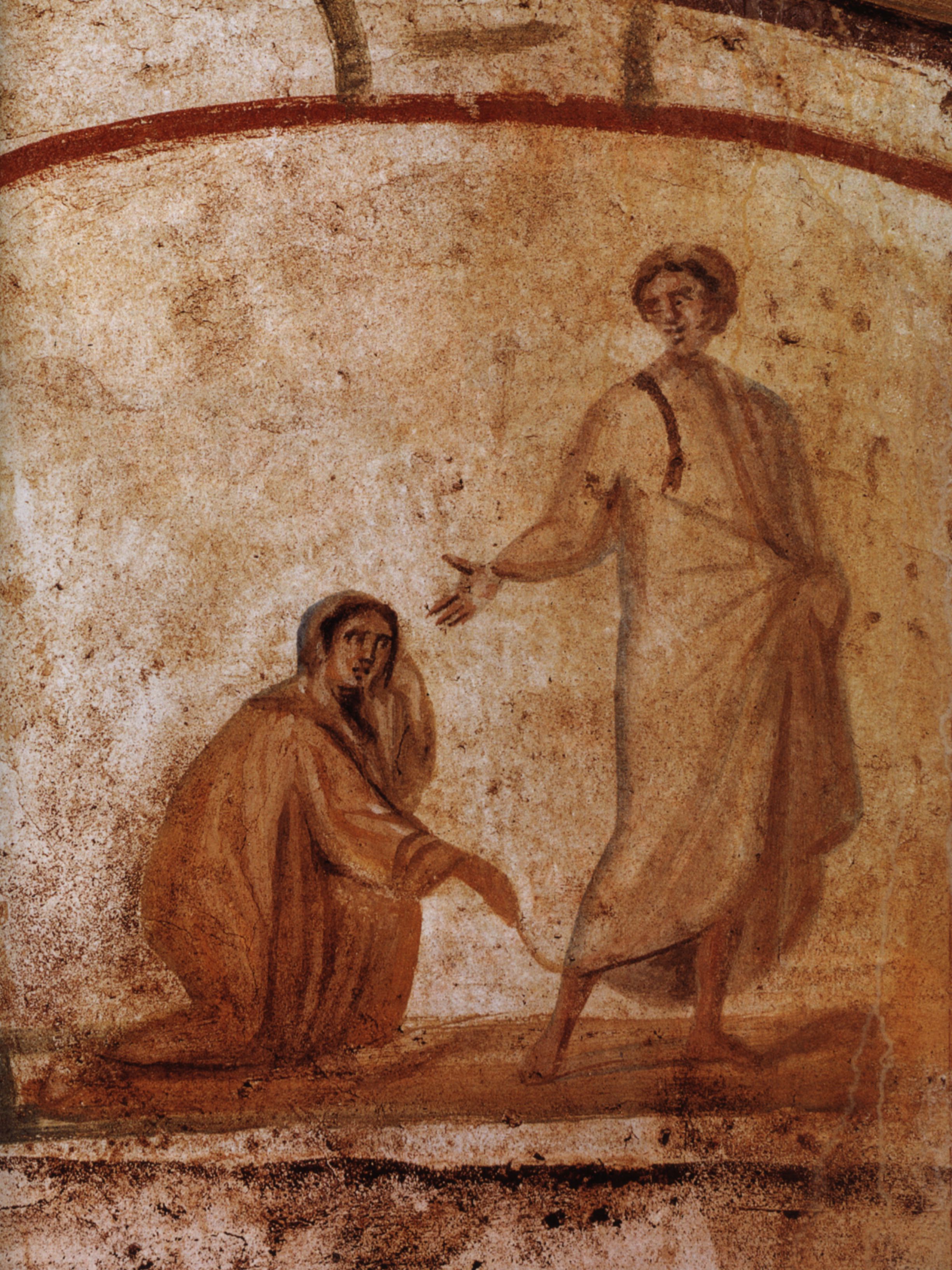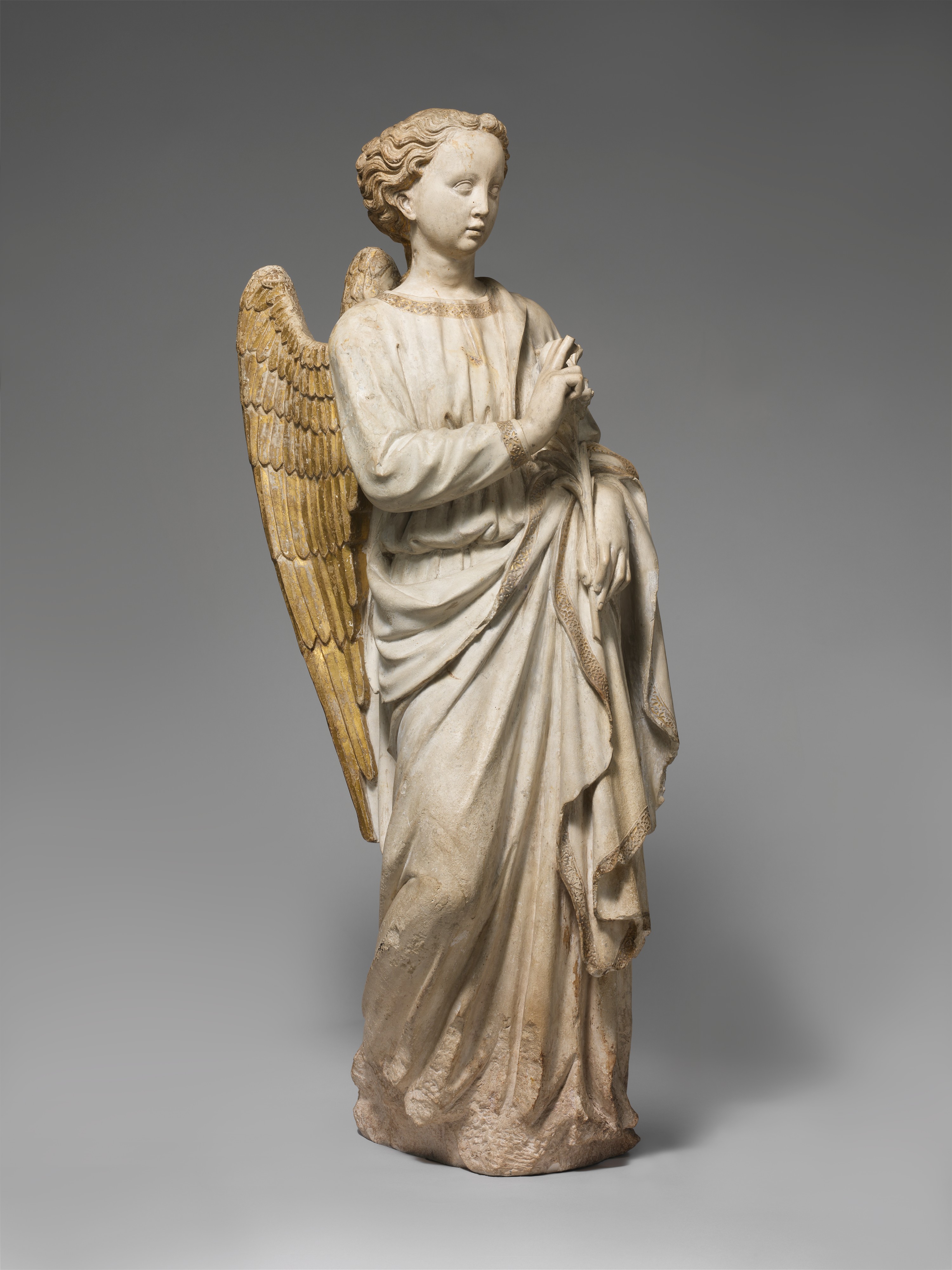|
Icon
An icon () is a religious work of art, most commonly a painting, in the cultures of the Eastern Orthodox, Oriental Orthodox, Catholic Church, Catholic, and Lutheranism, Lutheran churches. The most common subjects include Jesus, Mary, mother of Jesus, Mary, saints, and angels. Although especially associated with portrait-style images concentrating on one or two main figures, the term also covers most of the religious images in a variety of artistic media produced by Eastern Christianity, including narrative scenes, usually from the Bible or the lives of saints. Icons are most commonly painted on wood panels with egg tempera, but they may also be cast in metal or carved in stone or embroidered on cloth or done in mosaic or fresco work or printed on paper or metal, etc. Comparable images from Western Christianity may be classified as "icons", although "iconic" may also be used to describe the static style of a devotional image. In the Greek language, the term for icon painting uses ... [...More Info...] [...Related Items...] OR: [Wikipedia] [Google] [Baidu] |
Byzantine Iconoclasm
The Byzantine Iconoclasm () are two periods in the history of the Byzantine Empire when the use of religious images or icons was opposed by religious and imperial authorities within the Ecumenical Patriarchate (at the time still comprising the Roman-Latin and the Eastern-Orthodox traditions) and the temporal imperial hierarchy. The First Iconoclasm, as it is sometimes called, occurred between about 726 and 787, while the Second Iconoclasm occurred between 814 and 842. According to the traditional view, Byzantine Iconoclasm was started by a ban on religious images promulgated by the Byzantine Emperor Leo III the Isaurian, and continued under his successors. It was accompanied by widespread destruction of religious images and persecution of supporters of the veneration of images. The Papacy remained firmly in support of the use of religious images throughout the period, and the whole episode widened the East–West Schism, growing divergence between the Byzantine and Carolingian Em ... [...More Info...] [...Related Items...] OR: [Wikipedia] [Google] [Baidu] |
Aniconism In Christianity
Aniconism is the absence of material representations of the natural and supernatural world in various cultures. Most denominations of Christianity have not generally practiced aniconism, or the avoidance or prohibition of these types of images, even dating back to early Christian art and architecture. Those in the faith have generally had an active Christian art, tradition of making artwork and Christian media; depicting God the Father in Western art, God, depictions of Jesus, Jesus, Holy Spirit in Christian art, The Holy Spirit, religious figures including Saint symbolism, saints and Prophets of Christianity, prophets, and Christian theology, other aspects of theology like The Trinity in art, The Trinity and Hand of God (art), ''Manus Dei''. There have however been periods of aniconism in History of Christianity, Christian history, notably during the controversy of the Byzantine iconoclasm of the eighth century, and following the Protestant Reformation of the 16th century, when C ... [...More Info...] [...Related Items...] OR: [Wikipedia] [Google] [Baidu] |
Mary, Mother Of Jesus
Mary was a first-century Jewish woman of Nazareth, the wife of Saint Joseph, Joseph and the mother of Jesus. She is an important figure of Christianity, venerated under titles of Mary, mother of Jesus, various titles such as Perpetual virginity of Mary, virgin or Queen of Heaven, queen, many of them mentioned in the Litany of Loreto. The Eastern Orthodox Church, Eastern and Oriental Orthodox, Catholic, Anglican, Methodist, Reformed Christianity, Reformed, Baptist, and Lutheran churches believe that Mary, as mother of Jesus, is the Theotokos, Mother of God. The Church of the East historically regarded her as Christotokos, a term still used in Assyrian Church of the East liturgy. Other Protestant views on Mary vary, with some holding her to have lesser status. She has the Mary in Islam, highest position in Islam among all women and is mentioned numerous times in the Quran, including in a chapter Maryam (surah), named after her.Jestice, Phyllis G. ''Holy people of the world: a cros ... [...More Info...] [...Related Items...] OR: [Wikipedia] [Google] [Baidu] |
Eastern Orthodox
Eastern Orthodoxy, otherwise known as Eastern Orthodox Christianity or Byzantine Christianity, is one of the three main Branches of Christianity, branches of Chalcedonian Christianity, alongside Catholic Church, Catholicism and Protestantism. Like the Pentarchy of the first millennium, the mainstream (or "Canon law of the Eastern Orthodox Church, canonical") Eastern Orthodox Church is Organization of the Eastern Orthodox Church, organised into autocephalous churches independent from each other. In the 21st century, the Organization of the Eastern Orthodox Church#Autocephalous Eastern Orthodox churches, number of mainstream autocephalous churches is seventeen; there also exist Organization of the Eastern Orthodox Church#Unrecognised churches, autocephalous churches unrecognized by those mainstream ones. Autocephalous churches choose their own Primate (bishop), primate. Autocephalous churches can have Ecclesiastical jurisdiction, jurisdiction (authority) over other churches, som ... [...More Info...] [...Related Items...] OR: [Wikipedia] [Google] [Baidu] |
Early Christian Art
Early Christian art and architecture (or Paleochristian art) is the art produced by Christians, or under Christian patronage, from the earliest period of Christianity to, depending on the definition, sometime between 260 and 525. In practice, identifiably Christian art only survives from the 2nd century onwards. After 550, Christian art is classified as Byzantine, or according to region. It is hard to know when distinctly Christian art began. Prior to 100, Christians may have been constrained by their position as a persecuted group from producing durable works of art. Since Christianity as a religion was not well represented in the public sphere, the lack of surviving art may reflect a lack of funds for patronage, and simply small numbers of followers. The Old Testament restrictions against the production of graven (an idol or fetish carved in wood or stone) images (see also Idolatry and Christianity) may also have constrained Christians from producing art. Christians may have m ... [...More Info...] [...Related Items...] OR: [Wikipedia] [Google] [Baidu] |
Eusebius Of Caesarea
Eusebius of Caesarea (30 May AD 339), also known as Eusebius Pamphilius, was a historian of Christianity, exegete, and Christian polemicist from the Roman province of Syria Palaestina. In about AD 314 he became the bishop of Caesarea Maritima. Together with Pamphilus, Eusebius was a scholar of the biblical canon and is regarded as one of the most learned Christians during late antiquity. He wrote the ''Demonstrations of the Gospel'', '' Preparations for the Gospel'' and ''On Discrepancies between the Gospels'', studies of the biblical text. His work '' Onomasticon'' is an early geographical lexicon of places in the Holy Land mentioned in the Bible. As "Father of Church History" (not to be confused with the title of Church Father), he produced the ''Ecclesiastical History'', ''On the Life of Pamphilus'', the ''Chronicle'' and ''On the Martyrs''. He also produced a biographical work on Constantine the Great, the first Christian Roman emperor, who was ''Augustus'' between A ... [...More Info...] [...Related Items...] OR: [Wikipedia] [Google] [Baidu] |
Byzantine - Saint Arethas - Walters 4820862
The Byzantine Empire, also known as the Eastern Roman Empire, was the continuation of the Roman Empire centred on Constantinople during late antiquity and the Middle Ages. Having survived History of the Roman Empire, the events that caused the fall of the Western Roman Empire in the 5th centuryAD, it endured until the fall of Constantinople to the Ottoman Empire in 1453. The term 'Byzantine Empire' was coined only after its demise; its citizens used the term 'Roman Empire' and called themselves 'Romans'. During the early centuries of the Roman Empire, the western provinces were Romanization (cultural), Latinised, but the eastern parts kept their Hellenistic culture. Constantine the Great, Constantine I () legalised Christianity and moved the capital to Constantinople. Theodosius I, Theodosius I () made Christianity the state religion and Greek gradually replaced Latin for official use. The empire adopted a defensive strategy and, throughout its remaining history, expe ... [...More Info...] [...Related Items...] OR: [Wikipedia] [Google] [Baidu] |
Mosaic
A mosaic () is a pattern or image made of small regular or irregular pieces of colored stone, glass or ceramic, held in place by plaster/Mortar (masonry), mortar, and covering a surface. Mosaics are often used as floor and wall decoration, and were particularly popular in the Ancient Rome, Ancient Roman world. Mosaic today includes not just murals and pavements, but also artwork, hobby crafts, and industrial and construction forms. Mosaics have a long history, starting in Mesopotamia in the 3rd millennium BC. Pebble mosaics were made in Tiryns in Mycenean civilisation, Mycenean Greece; mosaics with patterns and pictures became widespread in classical times, both in Ancient Greece and Ancient Rome. Early Christian basilicas from the 4th century onwards were decorated with wall and ceiling mosaics. Mosaic art flourished in the Byzantine Empire from the 6th to the 15th centuries; that tradition was adopted by the Norman dynasty, Norman Kingdom of Sicily in the 12th century, by th ... [...More Info...] [...Related Items...] OR: [Wikipedia] [Google] [Baidu] |
Jesus
Jesus (AD 30 or 33), also referred to as Jesus Christ, Jesus of Nazareth, and many Names and titles of Jesus in the New Testament, other names and titles, was a 1st-century Jewish preacher and religious leader. He is the Jesus in Christianity, central figure of Christianity, the Major religious groups, world's largest religion. Most Christians consider Jesus to be the Incarnation (Christianity), incarnation of God the Son and awaited Messiah#Christianity, messiah, or Christ (title), Christ, a descendant from the Davidic line that is prophesied in the Old Testament. Virtually all modern scholars of classical antiquity, antiquity agree that Historicity of Jesus, Jesus existed historically. Accounts of Life of Jesus, Jesus's life are contained in the Gospels, especially the four canonical Gospels in the New Testament. Since the Age of Enlightenment, Enlightenment, Quest for the historical Jesus, academic research has yielded various views on the historical reliability of t ... [...More Info...] [...Related Items...] OR: [Wikipedia] [Google] [Baidu] |
Art History
Art history is the study of Work of art, artistic works made throughout human history. Among other topics, it studies art’s formal qualities, its impact on societies and cultures, and how artistic styles have changed throughout history. Traditionally, the discipline of art history emphasized painting, drawing, sculpture, architecture, ceramics and decorative arts; yet today, art history examines broader aspects of visual culture, including the various visual and conceptual outcomes related to art. Art history is a broad discipline encompassing many branches. Some focus on specific time periods, while others concentrate on particular geographic regions, such as the Art of Europe, art of Art of Europe, Europe. Thematic categorizations include feminist art history, iconography, the analysis of symbols, and Design history, design history. Studying the history of art emerged as a means of documenting and critiquing artistic works, with influential historians and methods originating ... [...More Info...] [...Related Items...] OR: [Wikipedia] [Google] [Baidu] |
Luke The Evangelist
Luke the Evangelist was one of the Four Evangelists—the four traditionally ascribed authors of the canonical gospels. The Early Church Fathers ascribed to him authorship of both the Gospel of Luke and the Acts of the Apostles. Prominent figures in early Christianity such as Jerome and Eusebius later reaffirmed his authorship, although a lack of conclusive evidence as to the identity of the author of the works has led to discussion in scholarly circles, both secular and religious. The New Testament mentions Luke briefly a few times, and the Epistle to the Colossians refers to him as a physician (from Greek for 'one who heals'); thus he is thought to have been both a physician and a disciple of Paul. Since the early years of the faith, Christians have regarded him as a saint. He is believed to have been a martyr, reportedly having been hanged from an olive tree, though some believe otherwise. The Eastern Orthodox Church, the Roman Catholic church and other major denominati ... [...More Info...] [...Related Items...] OR: [Wikipedia] [Google] [Baidu] |
Angel
An angel is a spiritual (without a physical body), heavenly, or supernatural being, usually humanoid with bird-like wings, often depicted as a messenger or intermediary between God (the transcendent) and humanity (the profane) in various traditions like the Abrahamic religions. Other roles include protectors and guides for humans, such as guardian angels and servants of God. In Western belief-systems the term is often used to distinguish benevolent from malevolent intermediary beings. Emphasizing the distance between God and mankind, revelation-based belief-systems require angels to bridge the gap between the earthly and the transcendent realm. Angels play a lesser role in monistic belief-systems, since the gap is non-existent. However, angelic beings might be conceived as aid to achieve a proper relationship with the divine. Abrahamic religions describe angelic hierarchies, which vary by religion and sect. Some angels have specific names (such as Gabriel or Mich ... [...More Info...] [...Related Items...] OR: [Wikipedia] [Google] [Baidu] |








